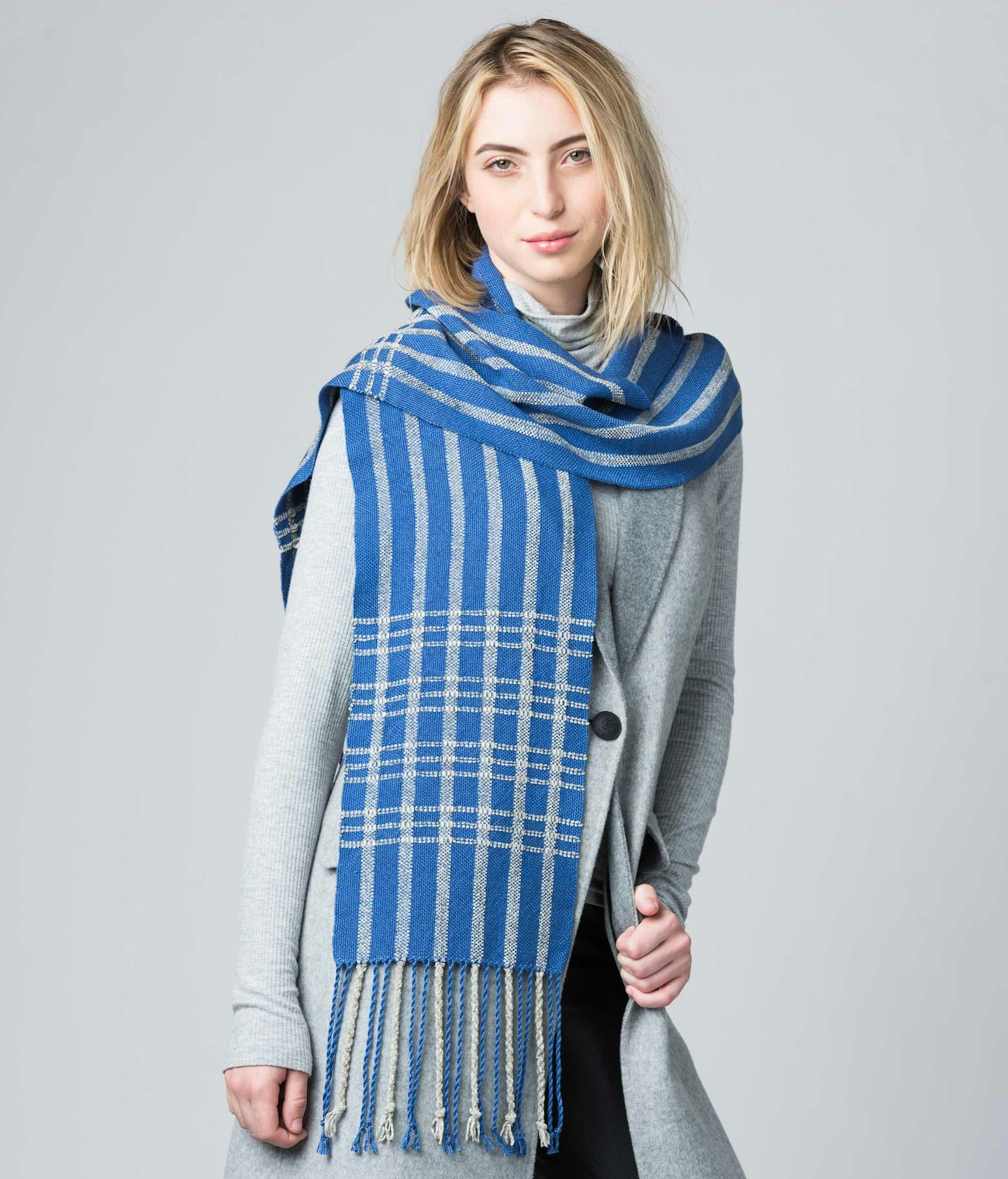Chenille yarn is sumptuously soft, with a texture and sheen like no other fiber. Its only fault is that if not woven correctly, it tends to worm, and for that reason, it wouldn’t be unreasonable to think it can’t be used on a rigid-heddle loom. I am here to tell you that this is untrue—you absolutely can weave with chenille on a rigid-heddle loom with the technique Jenny Sennott uses in her Winter Jasmine Scarf, from Handwoven Loom Theory: Rigid-Heddle Scarf Collection. In it, she cleverly combines Tencel and chenille in plain weave with warp floats and just a hint of inlay to create a gorgeous, worm-free scarf. Here’s what Jenny had to say about her design. -Christina
 The Winter Jasmine Scarf by Jenny Sennott is lusciously soft with an unbeatable drape. Photo by Caleb Young (Good Folk Photography)
The Winter Jasmine Scarf by Jenny Sennott is lusciously soft with an unbeatable drape. Photo by Caleb Young (Good Folk Photography)
Designer Jenny Sennott’s Statement
Tencel and chenille are alluring yarns for weavers. Tencel has a sheen and drape reminiscent of silk, and chenille’s plush texture never loses its appeal for weavers seeking a luxurious fabric. But both of these yarns can seem daunting to rigid-heddle weavers. Tencel is so fine, and chenille tends to “worm” if not woven securely. How can we weave these tempting yarns on our rigid-heddle looms? Rest assured that with some sampling and thoughtful planning, you can use these yarns on your loom.
I sampled for this scarf using Cotton Clouds’ 8/2 Tencel and Gypsy Chenille. Both yarns are available in a broad range of gorgeous colors. I knew I would need to double the Tencel in both warp and weft to create a stable cloth. Doubling the yarn allowed me to use two closely related blues instead of just one, resulting in more depth of color. My sampling also helped me determine how to weave the chenille to avoid worming. Both yarns performed well as warp with no breakage.
Finishing Tencel and chenille also requires forethought. As fringe, they will both fray and deteriorate if left unprotected. I allowed a generous 9" fringe on my scarf so that before wet-finishing, I could tie the fringe in knots that I trimmed off before twisting the fringe. I have found Su Butler’s book Understanding Rayon Chenille to be a valuable resource for working with chenille.
The inlay technique is a simple one that highlights the Gypsy Chenille while keeping it secure. I chose to weave my “Jasmine” motif on just one end to make it the main focus of my scarf. Once you understand the inlay technique, you could add other inlay motifs as you like. The finished scarf has a luxurious hand and graceful drape. It’s a perfect accessory for special occasions or anytime you just want to feel pampered.
Project at a Glance
PROJECT TYPE: Rigid-heddle.
STRUCTURE: Plain weave with warp floats inlay.
EQUIPMENT: Rigid-heddle loom, 10" weaving width; 12-dent heddle; 2 shuttles; 2 bobbins; 1 pick-up stick; 2 small stick shuttles (optional).
YARNS: 8/2 Tencel (100% lyocell; 3,360 yd/lb; Cotton Clouds). Gypsy Chenille (100% rayon chenille; 1,300 yd/lb; Cotton Clouds).
FINISHED SIZE (after washing): 8½" x 70" with 6" fringe.
Originally published 6/30/2022; updated 12/24/2024

